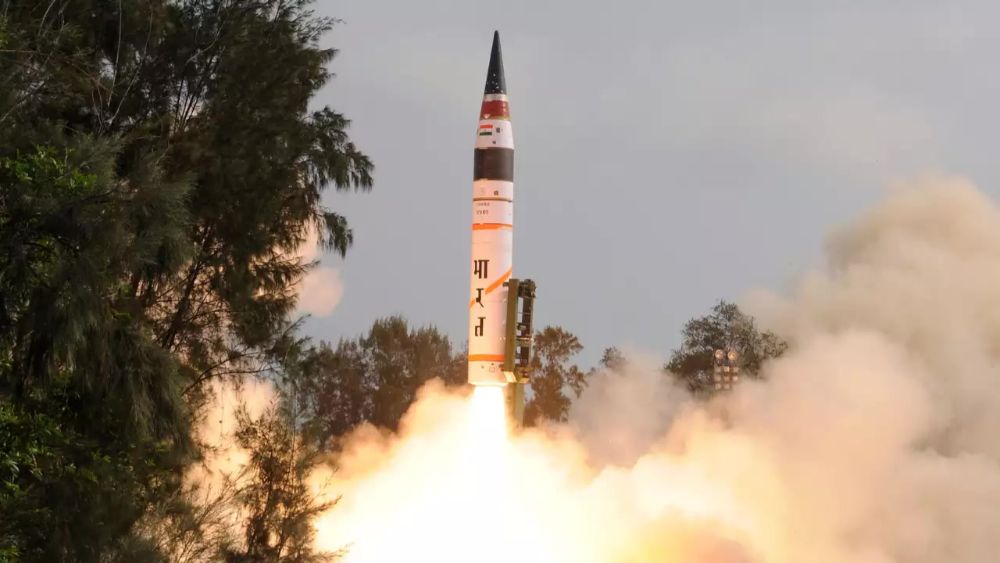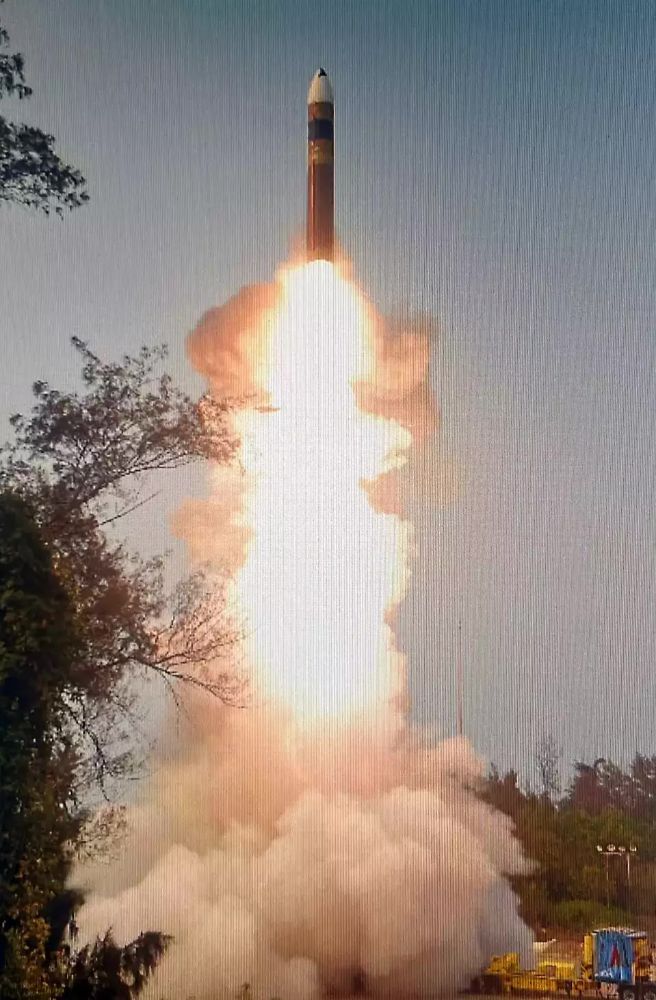India has recently conducted the inaugural flight test of Mission Divyastra, marking a significant milestone in the nation’s defence capabilities. This test saw the indigenous Agni-5 missile being equipped with Multiple Independently Targetable Reentry Vehicle (MIRV) technology, showcasing India’s prowess in missile development and innovation.

Praise from the Prime Minister
Prime Minister Narendra Modi expressed pride in the achievements of the Defense Research and Development Organization (DRDO) scientists involved in Mission Divyastra. He commended their dedication and expertise in successfully integrating MIRV technology into the Agni-5 missile. This advancement enables a single missile to deploy multiple warheads, each capable of targeting distinct locations, thereby enhancing India’s strategic defence capabilities.
Joining the Elite Group
With the successful test of Mission Divyastra, India joins a select group of nations possessing MIRV capability. This technology, initially developed in the 1960s, allows for the delivery of multiple warheads from a single missile, offering flexibility in targeting and significantly amplifying the missile’s effectiveness.
Indigenous Technological Advancements
Mission Divyastra showcases India’s indigenous technological advancements in avionics systems and high-accuracy sensor packages. These critical components ensure that the re-entry vehicles reach their designated targets with precision and reliability. The successful integration of indigenous technologies underscores India’s growing self-reliance and technological prowess in defence capabilities.

Historical Context of MIRV Technology
MIRV technology, pioneered by the United States in the 1970s, has since been adopted by several nations to enhance their strategic deterrence capabilities. Both the United States and the Soviet Union developed MIRV-enabled intercontinental ballistic missiles (ICBMs) and submarine-launched ballistic missiles (SLBMs), marking a significant advancement in the arms race during the Cold War era.
The Agni Missile Series
Named after the Sanskrit word for “fire,” the Agni missile series symbolises India’s commitment to bolstering its defence capabilities. Initially developed in 1983 as part of a guided missile development project, the Agni series has evolved to meet the evolving security challenges faced by India. While earlier versions primarily targeted shorter ranges with neighbouring Pakistan in mind, subsequent iterations, including the Agni-5, reflect India’s strategic focus on addressing potential threats from countries like China.
The successful test of Mission Divyastra represents a significant leap forward for India’s defence capabilities, showcasing the nation’s commitment to innovation and self-reliance in defence technology. With the integration of MIRV technology into the Agni-5 missile, India strengthens its strategic deterrence posture and asserts its position among the world’s leading military powers.
